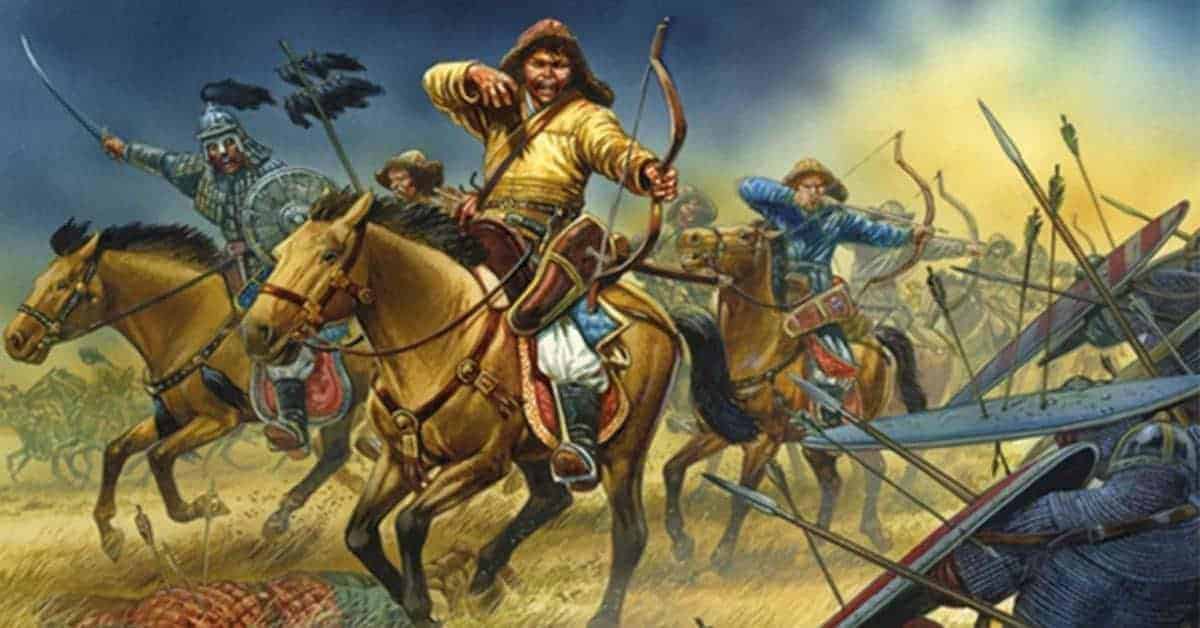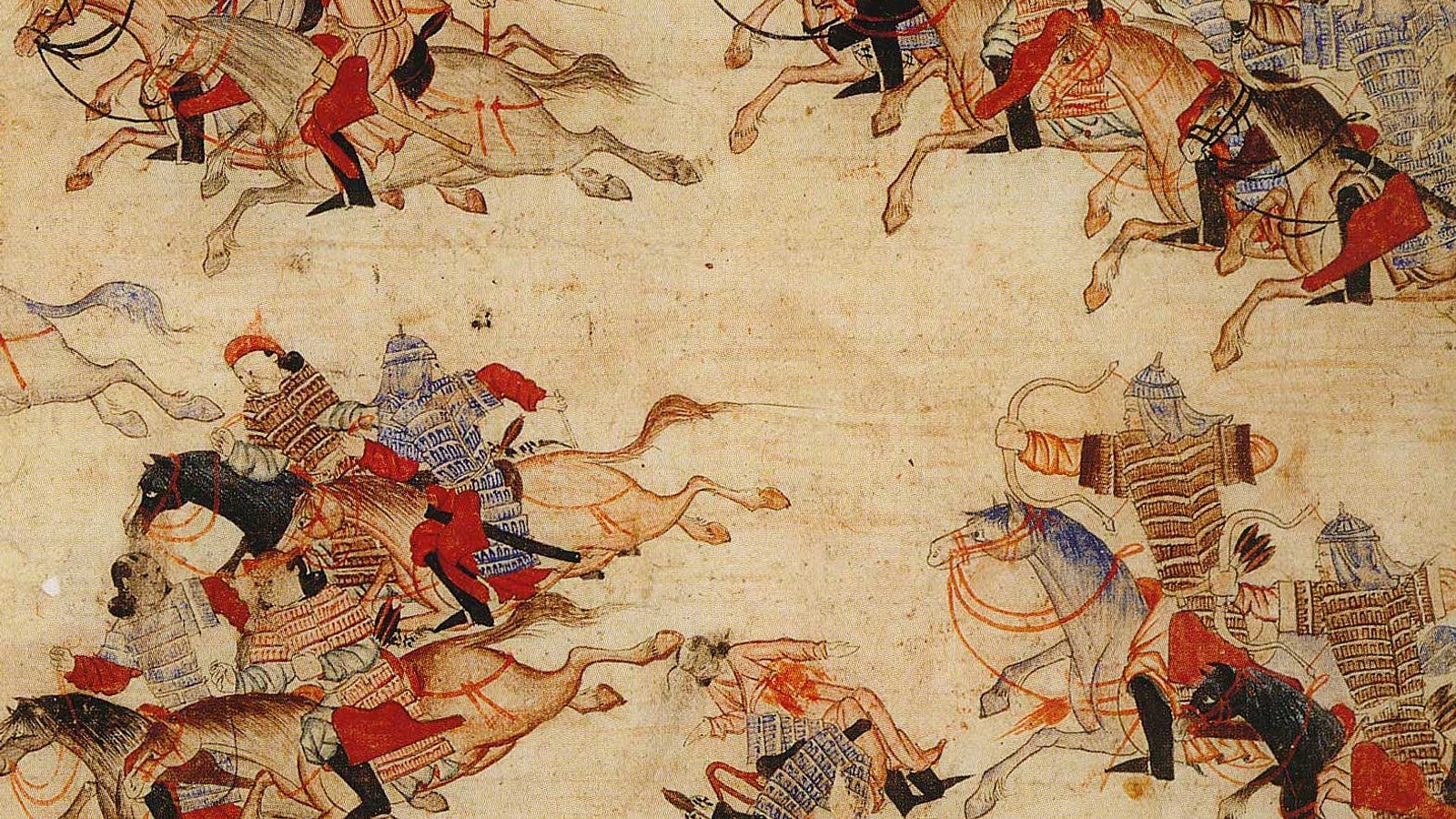Mongol Empire: "Genghis Khan's Legacy: A Journey through Mongol History"
Mongol Empire
The Mongol Empire (1206-1368) was founded by Genghis Khan (r. 1206-1227), the first Great Khan or 'universal ruler' of the Mongol peoples. Genghis forged the empire by uniting nomadic tribes of the Asian steppe and creating a devastatingly effective army with fast, light, and highly coordinated cavalry. Eventually, the empire dominated Asia from the Black Sea to the Korean peninsula.
Expert horsemen and archers, the Mongols proved unstoppable in Central Asia and beyond, defeating armies in Iran, Russia, Eastern Europe, China, and many other places. The descendants of Genghis each ruled a part of the empire - the four khanates - the most powerful of which was the Mongol Yuan Dynasty in China (1271-1368), established by Kublai Khan (r. 1260-1279). Eventually, the Mongols became part of the sedentary societies they had so easily overwhelmed and many converted from traditional shamanism to Tibetan Buddhism or Islam. This was a general symptom of the Mongols not only losing part of their cultural identity but also, too, their famed military prowess, as the four khanates all succumbed to damaging dynastic disputes and the armies of their rivals. Although not famed for creating any lasting architectural wonders or political institutions, the Mongols did make a significant contribution to world culture by finally connecting the Eastern and Western worlds via expanded trade routes, diplomatic embassies, and the movement of missionaries and travelers from Eurasia to the Far East.
Nomads of the Steppe
The Mongols were pastoral nomads of the Asian steppe who herded sheep, goats, horses, camels, and yaks. These tribes moved according to the seasons and lived in temporary camps of circular felt tents or yurts (gers). The climate of Mongolia is often harsh and, reflecting this, clothing was warm, durable, and practical. Felt from sheep's wool and animal furs were the most common material to make clothing which was remarkably similar for both men and women: heelless boots, baggy trousers, a long jacket-robe (deel) worn with a leather belt, and a conical hat with earflaps, while underclothes were made from cotton or silk.
Religious Beliefs
The Mongols' religion had no sacred texts or particular ceremonies but was, rather, a mix of animism, ancestor worship, and shamanism. Instances of the elements of fire, earth, and water, impressive geographical sites like mountains, and natural phenomena such as storms were considered to possess spirits. Shamans, who could be both men and women, were thought able to, in a state of trance, communicate with these spirits and travel in their world, helping to find lost souls and divine future events.
Foundation By Genghis Khan
The Mongol nomadic tribes were then, used to a tough life, were highly mobile by nature, and were trained from childhood to ride horses and shoot bows. These qualities would make them excellent warriors able to endure long and complex campaigns, cover vast amounts of territory in a short space of time, and survive on only the absolute minimum of supplies. Even the role of women and their chores of camp-making and transportation helped the Mongol army as they provided vital logistic support for their husband warriors. Genghis Khan was perhaps the first Mongol leader to realize that if only the various tribes and clans could be united, the Mongols could master the world.
Genghis, born Temujin c. 1162, overcame a harsh childhood of abandonment and poverty and established himself as an able military commander for Toghril, chief of the Kerait tribe. The life and times of Genghis are told in The Secret History of the Mongols, a 13th-century chronicle that is our best primary source for the early empire. Over around 10 years from 1195 to 1205, Genghis became a leader in his own right and slowly expanded his domain through a ruthless mixture of diplomacy, warfare, and terror - for many warriors it was often a case of joining the young leader or being executed. Tribes such as the Tartars (a name medieval Westerners wrongly applied to the Mongols themselves), Kereyids, Naimans, and Merkids were brought into line. Finally, in 1206 in a grand meeting of all tribal leaders (a kurultai), Genghis Khan (aka Chinggis Khan) was formally recognized as the Great Khan or 'universal ruler' of the Mongols.
Expansion: Northern China & Persia
Mongol tribal leaders had traditionally achieved and then maintained their position of power by distributing war booty amongst their loyal followers and Genghis was no different. The Mongol army was based around a core of 10,000 men, which was the khan's personal bodyguard, the kitten. Members of this elite would also hold key administrative positions across the empire. Additional troops were gained through the conscription of the Mongol tribes and contingents from allies and conquered territories. The main offensive weapon was the light cavalry with its riders expert at firing the powerful Mongol composite bow. Mongol horses were another asset both for their sturdiness and stamina, but also for their sheer numbers, allowing riders up to 16 spare mounts which meant an army could travel huge distances with great speed.
Ogedei Khan Attacks Europe
Genghis had decreed that his empire was to be divided among his four sons Jochi, Chagatai (Chaghadai), Tolui (Tului), and Ogedei (Ogodei), with each ruling a khanate (although Jochi would predecease his father in 1227). Ogedei became the new Great Khan (r. 1229-1241) and thus ruler of all the Mongols. The unified empire would endure until 1260 CE when the four khanates became fully autonomous (see below).
Ogedei Khan further consolidated the Mongol state apparatus by appointing members of the imperial bodyguard and ministers as regional governors (Karachi), conducting a census, and imposing a proper tax system (as opposed to the mere confiscation of property). In 1235, a capital was selected, Karakorum (Qaraqorum) in Mongolia. The Yam network was expanded, wells were protected along trade routes, and traveling merchants were given military protection.
Kublai Khan Attacks China & Japan
Kublai Khan would reign from 1260 to 1294, but he had already made an impression before that when he campaigned with Mongke Khan against Song China. Kublai had to battle with his younger brother Ariq Boke (1219-1266) for the position of Great Khan, but Kublai won, and, even if the empire was now effectively split into four khanates, he had the consolation that his part remained the richest. Kublai, in any case, was ambitious for a title even more prestigious: Chinese emperor. Consequently, the Song was again attacked, but this time Kublai engaged in siege warfare using superior catapults - knowledge acquired from western Asia. City after city fell over the next 11 years and, with the fall of the capital Lin'an on 28 March 1276, so too fell the Song Dynasty. On 19 March 1279, a great naval battle was won at Yaishan near modern-day Macao - another instance of successful adaptation in Mongol warfare - and the very last Song resistance was quashed. Kublai had defeated what all steppe nomads before him had dreamed of: the mighty and immensely rich state of China.
The Khanates & Decline
While the Great Khans had been preoccupied with the eastern part of the Mongol Empire, the central and western parts largely went their own way. The Golden Horde, centered on the western Eurasian steppe, was founded by Batu Khan (d. 1255), grandson of Genghis, around 1227. It would outlast all the others, officially terminating in 1480, but from the mid-14th century, the Russians and Lithuanians were resurgent in the area. The Ilkhanate, centered in Persia, was founded by Hulegu (d. 1265), another grandson of Genghis around 1260. It would be constantly threatened by its southeastern neighbour the Mamluk Sultanate (1261-1517) and disintegrated due to dynastic disputes in 1335. The Chagatai Khanate was established by Chagatai (1183-1242), the second son of Genghis, and would remain the most truly Mongol state where nomadic roots proved difficult to shake off. Again, dynastic disputes brought its collapse in 1363.
The Mongol Legacy
The Mongols may not have troubled many modern museum curators with their art or left fine buildings to admire but they did leave a lasting legacy in other ways. Perhaps their greatest effect on world culture was to make the first serious connections between the East and West. The Mongol Empire, the largest contiguous land empire up to that point, stretched across one-fifth of the globe, and their soldiers were obliged to fight Teutonic knights at one end while at the other they faced samurai warriors, neither of which enemy had any notion of the other's existence. Hitherto, the Chinese and Europeans had each viewed the other's lands as a semi-mythical place of monsters. As ambassadors, missionaries, merchants, and travelers like Marco Polo (1254-1324) were encouraged to freely cross Asia, contact increased, and ideas and religions were spread. Gunpowder, paper, printing, and the compass all became familiar in Europe. The Mongols spread ideas in cuisine, too, such as making their sullen (stolen) broth-come-stew a popular dish across Asia even today. There were, alas, less advantageous consequences, like the Black Death (1347-1352), first transferred from a pocket of remote China to the Black Sea and from there to Venice and the rest of Europe. In Mongolia, though, the empire is remembered fondly as a golden era, and Genghis Khan, the starter of it all, continues to be honored with regular ceremonies in the Mongolian capital of Ulaanbaatar.
Publisher: M. Celio Durrani
Source: World History Encyclopedia





Comments
Post a Comment